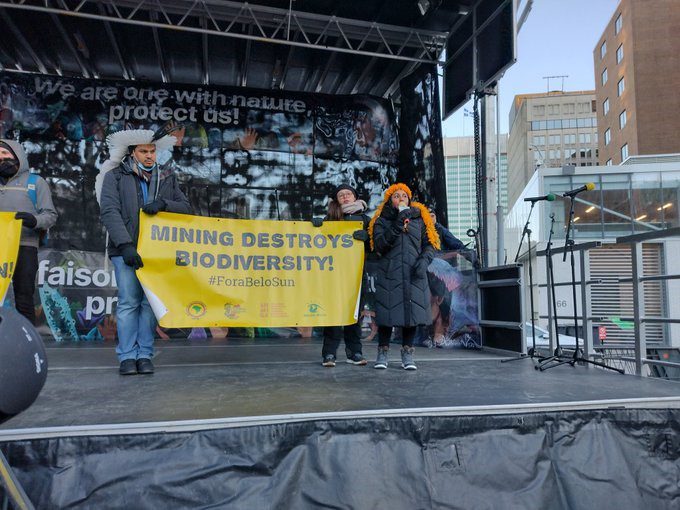COP15 president Huang Runqiu, China’s environment minister, brings down the gavel on the COP 15 agreements.
Originally intended to be held in China and delayed by two years because of the global pandemic, COP15, the biodiversity equivalent to COP27’s climate chance summit, was still hosted by China but held in Montreal, Canada, in December 2022.
Negotiations were difficult and, as so often happens at these events, overran their planned timescale. But in the early hours of December 19th a deal agreeing the Kunming-Montreal Global Biodiversity Framework (the GBF), a set of goals and targets to end biodiversity loss, was reached and agreed to by 196 countries.
The headline target – 30 x 30 – was an ambition to conserve 30% of the world’s land and water by 2030. This target is often compared in importance to the Paris Agreement’s maximum 1.5oC temperature increase and it was feared that it would not survive into the final agreement. But to the relief of all concerned, the final wording calls on countries to ensure that “at least 30% of terrestrial, inland water, and of coastal and marine areas” are conserved by 2030.
A second 30 x 30 target was also achieved as developed countries agreed to provide $30 billion per year for developing countries by 2030. Like COP27’s Loss and Damage agreement, this will mobilise funds to enable less developed countries to achieve their national targets. “At least $200bn per year” will flow by 2030 from “all sources – domestic, international, public and private”, of which at least $20 billion per year will come from the developed world by 2025 and $30 billion by 2030. The Global Environment Facilty has been invited to set up a Special Trust Fund to run from 2023 to 2030 to support this.

At COP15, indigenous people call for mining companies to leave the Amazon.
Human rights were at the forefront of discussions as representatives of indigenous communities, youth and women’s groups all called for a “meaningful integration of human rights” in the GBF, as these groups are all essential for biodiversity conservation.
One part of the new framework includes participation of indigenous peoples, women and youth in decision making on biodiversity, and another focuses on gender equality. Indigenous and traditional territories and their rights are recognised, a move welcomed by the International Indigenous Forum on Biodiversity. The Working Group of Human Rights and Biodiversity highlighted the need for a monitoring framework to ensure human rights during implementation.
Another key point for discussion in Montreal was the reduction, redirection and elimination of subsidies that exacerbate biodiversity loss and climate change. The result – the aim to identify by 2025 and then eliminate, phase out or reform such subsidies. Although it mentions no specific subsidies, it does stipulate that they should be reduced by at least $500bn each year by 2030, “starting with the most harmful incentives”.
Inevitably, there are some limitations to the outcome. One is that, although it was represented at COP15, the US was not a signatory to the agreement as it had never ratified the UN Convention on Biological Diversity which formed the basis of the discussions.
The other disappointment is that none of the components of the Convention on Biological Diversity nor the Global Biodiversity Framework are legally binding. Instead, all countries have agreed to report on, review and voluntarily ‘ratchet up’ their ambitions.
So, mixed success for COP15. But at least it eventually took place. And many major targets have been achieved. Now it is up to the participating governments to ensure that they are implemented. The world will be watching!
 Alton Climate Action Network
Alton Climate Action Network